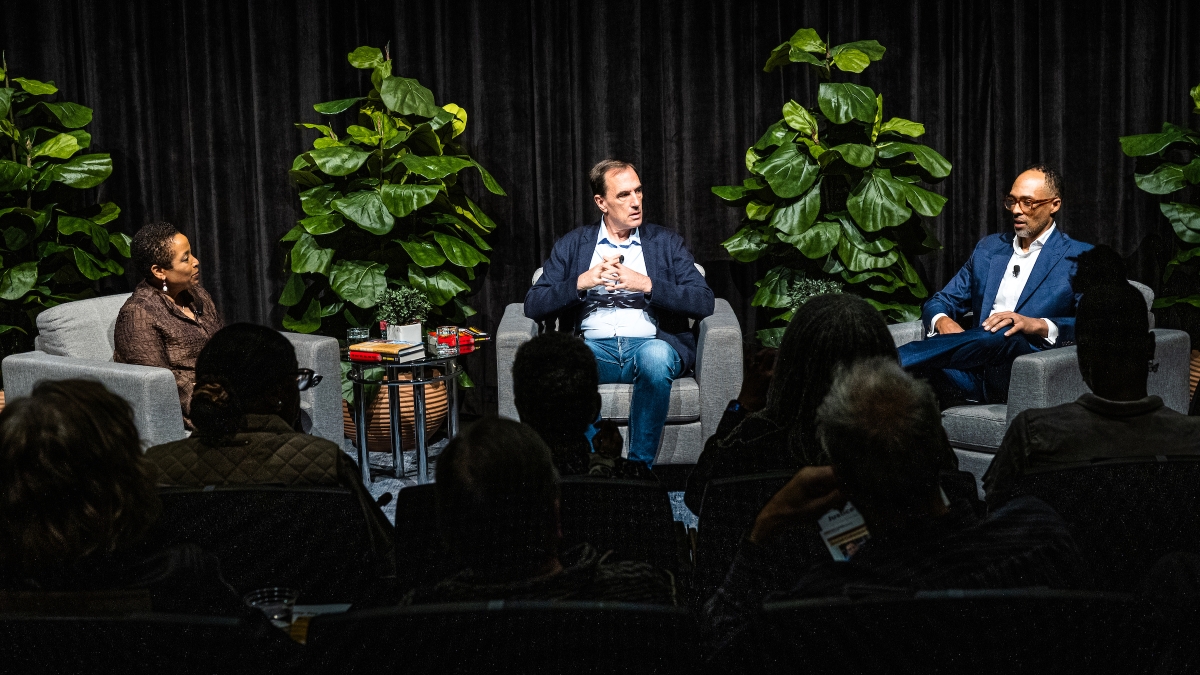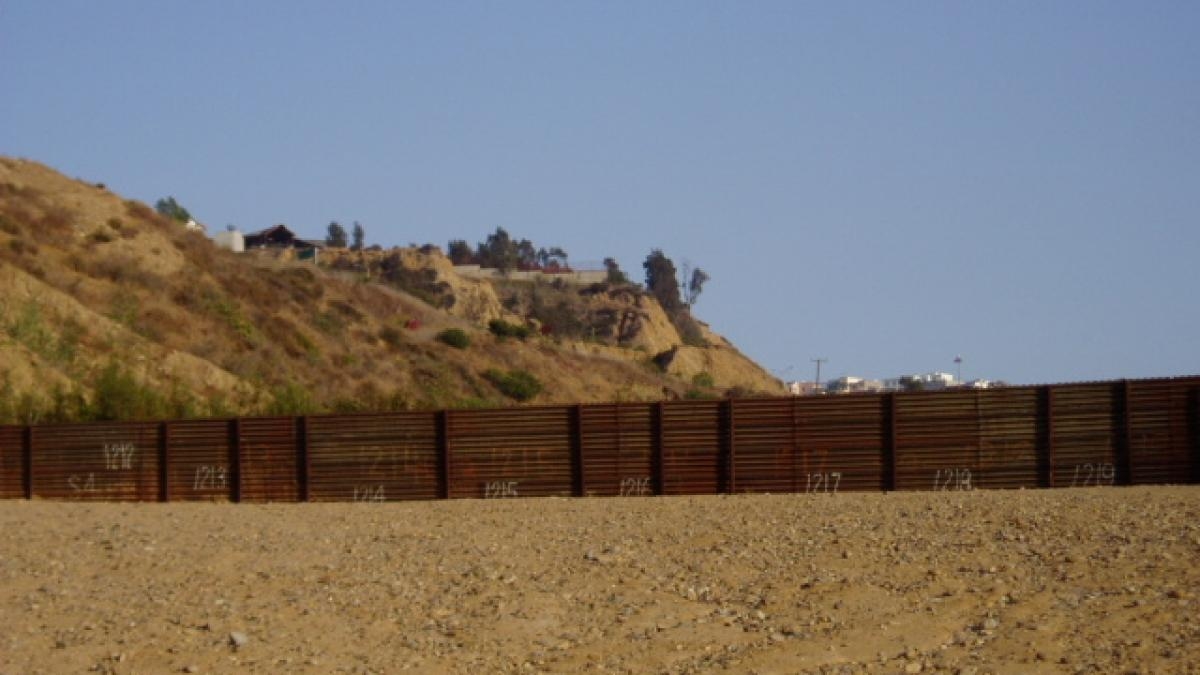Today, Cynthia Bejarano holds the prestigious title of Regents' Professor in New Mexico State University’s (NMSU) Department of Interdisciplinary Studies.
But it wasn’t always that way.
Bejarano came from admittedly humble origins. Growing up in the U.S.-Mexico borderlands, she stood witness to gang violence, rampant domestic abuse and a crushing lack of infrastructure.
Taking inspiration from her experiences, Bejarano rose up out of the barrio with the goal of better serving her community.
First, she earned a bachelor's and master's degree from NMSU, then went on to receive her doctorate in justice studies from Arizona State University in 2001.
Along the way, she researched and wrote the book “¿Qué Onda?"¿Qué onda?" is an informal greeting like "What's up" or "What's happening?": Urban Youth Culture and Border Identity” examining the challenging development of identity for U.S.-Mexico borderland youths. With colleague Rosa-Linda Fregoso she also co-edited the book “Terrorizing Women: Feminicide in the Americas,” bringing awareness to the shocking increase in violence against women in Latin America over the past two decades.
At NMSU Bejarano works with youth through the College Assistance Migrant Program, a federally funded program to serve the children of migrant and seasonal farmworkers. She co-founded Amigos de las Mujeres de Juarez with colleagues from Las Cruces, New Mexico, to support the efforts of human-rights defenders in Juarez, Chihuahua City and beyond. Her research focuses on border violence, youth cultures, immigration and migration issues, and gender-based violence at the U.S.-Mexico border.
Next week, she will be back at ASU to deliver the School of Transborder Studies' 2016 Wells Fargo Transborder Distinguished Lecture, titled “The Barrio, The Book and The Border: Violence and the Pedagogies of Resistance in Borderlands Studies.”
The lecture, which is free and open to the public, runs from from 6 to 8:30 p.m. Thursday, April 21, in the Memorial Union Gold Room 207 on the Tempe campus. RSVP is required by Friday, April 15. Click here to RSVP.
While gearing up for her lecture, Bejarano spoke with ASU Now about her upbringing in the borderlands and how she works to maintain an activist agenda there.
Question: What was it like growing up in the borderlands?
Answer: I grew up in Anthony, New Mexico, which is right on the Texas-New Mexico border, and roughly 20 miles from the international border. Most of the people I knew were working-class, poor and struggling to make ends meet. Anthony was and is a “colonia,” which is a statistical designation signifying a tremendous lack of infrastructure. During my upbringing we lacked streetlights, paved roads, sidewalks and other amenities people take for granted. In essence, a colonia is kind of like a rural barrio.
The city was recently incorporated on January 5, 2010, but still lacks several resources despite local community efforts to garner support from county and state governance for financial, economic and overall vitality for the small town. What is more, a lot of people were first-generation immigrants, and nearly everyone had family in Juarez [Mexico]. Growing up, we went to Juarez on a regular basis, where things such as dental care were much cheaper, and frequent trips to the Juarez mercado [market] were the highlight of many visits with extended family.
Q: How did that experience influence your research interests today?
A: I guess the easiest way to answer that is I experienced or witnessed all of these things growing up. A lot of kids were in gangs or they identified strongly in particular subgroups, usually for survival. As a young person I saw a lot of violence in my community: violence stemming from poverty and racism, marginalization, lack of infrastructure, poor health and food options, etc. Throughout my adolescence, I witnessed spousal abuse periodically when neighborhood women would run to our home asking to use the phone, or when teenage girlfriends of mine endured teen dating violence — as a college student I experienced dating violence as well. These experiences opened my eyes to the myriad ways that gender and violence coalesce to form gender-based crimes. In retrospect, I may have been aware of sex-trafficking as it intersected with migration.
I also saw violence tied to growing drug cartel competition, and I knew people who landed in jail or prison because they became caught up in the allure of making money. For many people, vice was the only way they knew to make ends meet, and violence would typically explode into bloodshed. For instance, a teenage boy was shot and killed in front of my house when I was a doctoral student at ASU. I had to rush home to be with my family because my mother was so fearful at the time. That murder by rival gang members reminded us of 15 years earlier when my father, a social worker, college graduate and pillar of our small community, was mistakenly attacked by a youth gang and nearly killed in front of our house because the boys, in their drug haze, mistook him for a rival gang member. This was a poignant moment that led me to becoming a criminologist.
As I grew up and entered college and then graduate school, I wanted to understand where these issues stemmed from and how to try to alleviate the pain and suffering of people in my community and communities like mine throughout the borderlands. Why was there so much violence? Why would people in a poor community seek help from a neighbor to stop a burglary (which is what my father was trying to do) instead of the police? Why were children playing soccer in a field of sand and dirt with a deflated basketball? And so on and so forth. ...
Having attended ASU, clearly within any definition of the borderlands, I continued to see these issues played out with painful regularity. I think that the difference while at ASU was that I gained a more critical perspective on violence, migration, youth cultures, etc. in the classes I took and the research I conducted. It provided me with the vocabulary to address these issues and advocate for better possibilities in the borderlands.
Q: What are some of the factors that contribute to the question of identity for borderland youths?
A: While doing research [for “¿Qué Onda?”] I learned that students had very nuanced views about themselves and others, but particularly the Mexican, Mexican-American, and Chicana/o students had multilayered and complex forms of identification. They considered issues not only of nationality, but of region of birth and family ties. They paid attention to fluency in Spanish; color of skin; clothing styles and pop culture; whether they were more urban or rural; tastes in music (banda, rock en espanol or norteño, for instance); and of course they paid attention to citizenship status. Gender was an important axis of differentiation as well.
Although the initial phases of that research date back to 1998 and 1999, I am not sure that things have fundamentally changed. I work with youth at New Mexico State University through the College Assistance Migrant Program, a federally funded program to serve the children of migrant and seasonal farmworkers, and our students continue to face many of the same challenges. All of our students — roughly 389 that we have served — are first-generation college students, and the vast majority come from Mexican immigrant backgrounds. They are concerned about language fluency, citizenship status, style, popularity, etc. The big difference, of course, is that students today deal with a much heavier surveillance presence due to September 11, and I argue this is punctuated in the U.S.-Mexico borderlands.
Q: What inspired you to co-edit “Terrorizing Women” with Fregoso?
A: This was another labor of love that my colleague and I worked on for four years. Rosa-Linda Fregoso and I have been committed to working with organizations and family-based organizations working to end feminicides in northern Mexico, specifically in the state of Chihuahua. I first became involved in advocacy in 1998 after learning of the femicides and the murder of Sagrario GonzalezMaria Sagrario Gonzalez Flores was abducted and murdered in April 1998 in Juarez, Mexico, at the age of 17. that catapulted me into this anti-feminicide movement. Sagrario’s haunting image is with me still. I became close friends with her mother and other mother-activists and human-rights defenders that I have the utmost respect for. I have never been so deeply touched and impacted as I have by the courage and resilience that these women have demonstrated to the world.
Q: Did you learn anything surprising while working on that book?
A: I cannot say that I have been surprised by any of the violence that we help to chronicle in “Terrorizing Women.” Perhaps what I find surprising, almost paralyzing, is how little people pay attention to the gender-based violence around them. I think this point is what struck me about this work. ... People are shocked by feminicide, but as a society, we are so conditioned to think of familial violence as something private that we don’t open our doors when we hear screaming and banging against our neighbor’s wall.
Q: Why is it especially important to address borderland issues at this point in time?
A: I think it is always important to address these issues, all of the time. During the mid-1990s in the wake of NAFTA and debates about globalization, we thought that things were pretty horrible: drug cartel violence, the loss of jobs and the depression of wages, the power of maquiladoraA maquiladora is a manufacturing operation in Mexico where factories import certain materials and equipment on a duty-free and tariff-free basis for assembly, processing or manufacturing, and then export the assembled, processed and/or manufactured products, sometimes back to the raw materials’ country of origin.s and the rising number of murders and disappearances of women. Back then it was imperative to address gender-based violence and hold governments accountable.
In our post-9/11 world we deal with many of the same issues, but we have an astonishing police surveillance apparatus that — despite billions of dollars spent militarizing the border — has done little to revitalize colonias, treat fundamental problems such as the lack of health care or environmental pollution, or reduce the number of deaths of women. Immigrant youth are detained in conditions that violate their human rights. The “wall” has utterly failed. And we still have hundreds of dead or missing women every year.
For me, it all punctuates the urgent need to re-imagine possibilities at the border. A perfect example is the American Civil Liberties Union campaign Revitalize not Militarize, which asks our federal government to invest in rural and urban infrastructure and education for borderland communities, rather than containing us with even higher border walls and surveillance mechanisms. Our youth, our elderly, our communities are dying slow deaths with little to no resources. There is a state of emergency in our border communities and no one is listening ... it’s “killing us softly” as the Lauryn Hill song so eloquently articulates.
So I guess that I would reiterate my view that it is always important to address these issues. Perhaps the difference from other eras is the capacity to organize quickly through social media and keep tabs on policing organizations. But, in terms of pressuring the Mexican government to address violence against women, I am not sure there is much difference from 25 years ago. ...
These forms of violence, whether they are institutional, individual, gender-based, economic or otherwise still must be combatted at home, in schools and scholarship, and in our activism. Each person has something to contribute, and if everyone does a little we all can achieve a lot.
More Local, national and global affairs

Video series tells story of 'Resettled People'
What better way for the story of former refugees to be told than having the refugees tell those stories themselves.That’s the idea behind "STEM Dreams in Motion: Stories of Resettled People."Using…

Department of State and ASU host Government Leaders Forum to strengthen semiconductor supply chains
By Emilia FrancoAs the global demand for semiconductors accelerates — with projections reaching $1 trillion by 2030 — Arizona State University, in partnership with the U.S. Department of State,…

Environmental writer, ER doctor address violence, climate change, more at sold-out ASU event
“The difficulty of understanding the consequences of heat is amplified by conventional notions of what it means to be hot. In pop culture, hot is sexy, hot is cool, hot is new…” That excerpt was…

